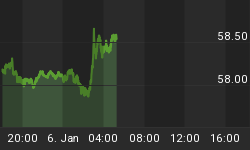When it comes to market sentiment there are 3 basic tenets that suggest to me that the current market dynamics will lead to a market top as opposed to a launching pad for the next bull market. First, sentiment at the recent lows (7 weeks ago) was not extreme. Therefore, the subsequent rally was expected to be weak as the "rubberband was not stretched to tight. Second, when considering the price cycle, which is the path prices take from low to high and back to low again, every sell signal should be followed by a buy signal. Our models have had their sell signal (April 20, 2012), but we have not had a proper buy signal yet. Third, consecutive sell signals (without intervening buy signals) are a sign of a market top. This observation is consistent on both a daily and weekly time frames, and it is consistent with the kind of price action we are currently seeing.
When we put this altogether, it is difficult to see substantially higher prices without investors becoming more bearish. The best way to see increasing bearishness is to have lower prices. Lower prices will certainly bring the Federal Reserve into action. As a variant to these observations, I think the Federal Reserve has been laying the ground work over the past couple of months based upon the unemployment situation, and this may prompt action prior to a stock market fall. In fact, the only thing that can circumvent the price cycle is QE3. The question becomes: will we get Fed intervention before equity prices fall or after.
The "Dumb Money indicator (see figure 1) looks for extremes in the data from 4 different groups of investors who historically have been wrong on the market: 1) Investors Intelligence; 2) MarketVane; 3) American Association of Individual Investors; and 4) the put call ratio. This indicator is neutral.
Figure 1. "Dumb Money/ weekly
Figure 2 is a weekly chart of the SP500 with the InsiderScore "entire market value in the lower panel. From the InsiderScore weekly report: "Market-wide insider sentiment was Neutral last week as insider trading activity hit a seasonal low-point. In fact, the number of unique non-10b5-1 plan buyers and sellers was the second-lowest in our 445-week (dating back to January 1, 2004) tracking period, bested only by the third week of April this year. Activity will begin to pick-up late this week/early next week and transactional volume will increase significantly as insiders at the first-round of earnings reporters are free to buy/sell again."
Figure 2. InsiderScore "Entire Market value/ weekly
Figure 3 is a weekly chart of the SP500. The indicator in the lower panel measures all the assets in the Rydex bullish oriented equity funds divided by the sum of assets in the bullish oriented equity funds plus the assets in the bearish oriented equity funds. When the indicator is green, the value is low and there is fear in the market; this is where market bottoms are forged. When the indicator is red, there is complacency in the market. There are too many bulls and this is when market advances stall. Currently, the value of the indicator is 67.52%. Values less than 50% are associated with market bottoms. Values greater than 58% are associated with market tops. It should be noted that the market topped out in 2011 with this indicator between 70% and 71%.
Figure 3. Rydex Total Bull v. Total Bear/ weekly
TheTechnicalTake offers a FREE e-newsletter: HERE
















